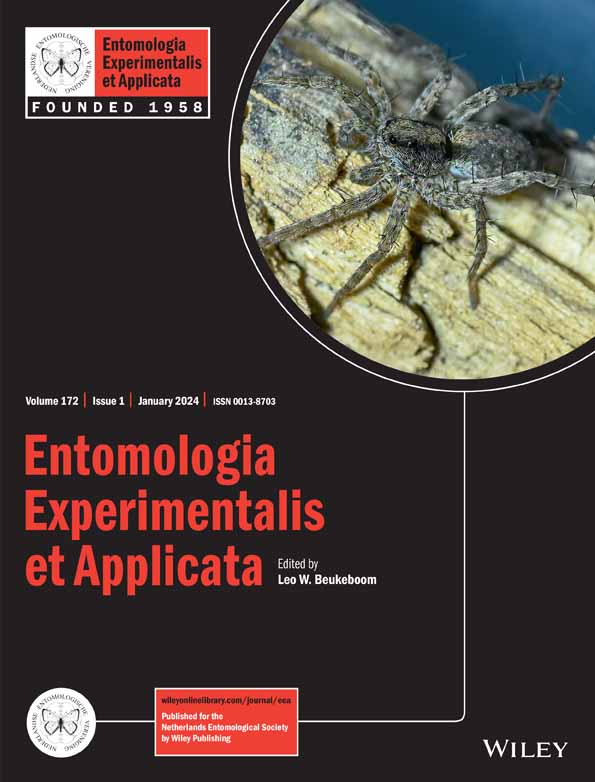Ver ítem
- xmlui.general.dspace_homeCentros Regionales y EEAsCentro Regional Patagonia NorteEEA BarilocheArtículos científicosxmlui.ArtifactBrowser.ItemViewer.trail
- Inicio
- Centros Regionales y EEAs
- Centro Regional Patagonia Norte
- EEA Bariloche
- Artículos científicos
- Ver ítem
Flight capabilities of invasive yellowjacket Vespula germanica drones: the effect of kinship and nutrition
Resumen
Dispersal is a multifactorial process which may influence, among several others, population dynamics, inbreeding likelihood, and mate competition. For species that disperse by flight, many studies have suggested that life-history traits, such as body size or nutritional condition, could promote variation in flight capabilities and, consequently, on dispersal behavior. Eusocial hymenopterans are likely to experience high densities of related reproductive
[ver mas...]
Dispersal is a multifactorial process which may influence, among several others, population dynamics, inbreeding likelihood, and mate competition. For species that disperse by flight, many studies have suggested that life-history traits, such as body size or nutritional condition, could promote variation in flight capabilities and, consequently, on dispersal behavior. Eusocial hymenopterans are likely to experience high densities of related reproductive individuals near their nests, thus increasing probabilities of inbred matings and kin competition. Spatial segregation resulting from differences in flight capabilities of Vespula germanica (Fabricius) (Hymenoptera: Vespidae) nestmate drones could reduce interactions with kin, thus decrease inbreeding and kin competition. Our aim was to characterize, in the laboratory, flight capabilities of sibling drones and elucidate traits that could affect it, focusing on the relevance of carbohydrate intake (diets with different sugar concentration) during early adulthood. Our results indicate that in tethered flight mill assays, V. germanica drones have highly variable flight capabilities within and between nests, with most drones likely to remain relatively close to their nest of origin. The observed flight capabilities are affected by nutrition, with those individuals better nurtured (i.e., with higher nutritional index), flying farther distances. Additionally, diets with variable carbohydrate concentration provided during early adulthood did not affect flight capabilities (only those exposed to a carbohydrate-free diet had reduced flight distances and speeds), suggesting that nutrition during larval stages is determinant for flight. Our findings contribute to the understanding of the mechanisms underlying V. germanica drone dispersal behavior which, in turn, might influence inbreeding likelihood in the species.
[Cerrar]

Fuente
Entomologia Experimentalis et Applicata 172 (1) : 50-57. (January 2024)
Fecha
2024-01
Editorial
Wiley
ISSN
0013-8703
1570-7458
1570-7458
Documentos Relacionados
Formato
pdf
Tipo de documento
artículo
Proyectos
(ver más)
INTA/2019-PD-E4-I079-001, Genética, genómica y ecología de insectos de importancia agronómica como insumo para el desarrollo de estrategias sustentables de control plagas
Palabras Claves
Derechos de acceso
Restringido
 Excepto donde se diga explicitamente, este item se publica bajo la siguiente descripción: Creative Commons Attribution-NonCommercial-ShareAlike 2.5 Unported (CC BY-NC-SA 2.5)
Excepto donde se diga explicitamente, este item se publica bajo la siguiente descripción: Creative Commons Attribution-NonCommercial-ShareAlike 2.5 Unported (CC BY-NC-SA 2.5)


